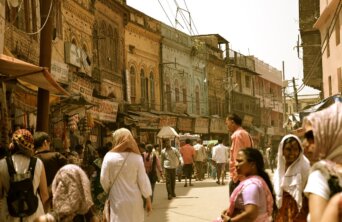- About
- Topics
- Story
- In-Depth
- Picks
- Opinion
- News
- Donate
- Signup for our newsletterOur Editors' Best Picks.Send
Read, Debate: Engage.
| topic: | Sustainable Development |
|---|---|
| located: | India |
| editor: | Bindu Gopal Rao |
Net-positive buildings represent a paradigm shift in sustainable architecture, aiming to produce more energy than they consume. Unlike net-zero buildings, which balance energy use, net-positive buildings generate a surplus that can be fed back into the grid or utilised for other purposes. These buildings significantly reduce their environmental impact by integrating renewable energy systems and passive design strategies.
“Traditional architectural practices, such as climate responsiveness and the use of local materials, enhance energy efficiency and sustainability.” Bedanta Saikia, vertical head of corporate architecture, science and technology at Edifice Consultants, told FairPlanet. “Key design elements like building orientation, insulation, and cross-ventilation minimise the need for energy-intensive systems. Efficient water fixtures and equipment contribute to water neutrality or positivity, while waste management and conscious consumption further minimise environmental impact.”
The building industry is actively taking steps to mitigate its environmental impact by investing in sustainable building materials that repurpose existing resources and reduce wastage.
“New-age materials such as cardboard or chipboard panels are developed to lower the carbon footprint by reusing materials instead of producing new ones. Moreover, utilising materials sourced within a 300-kilometre radius of the region also creates architecture that engages with the inhabitants and is context-appropriate. I believe that to radically change our future, innovation must be directed at optimising what is already available,” Rahul Bansal, a partner at architecture firm groupDCA, told FairPlanet.
Materials such as Aerocon panels, sandwich panels composed of two lightweight fibre-reinforced cement sheets with a tongue and groove joint system, enable quick on-site assembly and reduce construction time.
As India strides into a future marked by rapid urbanisation, burgeoning population, and heightened environmental consciousness, the trajectory of its built environment is on the brink of a transformative shift. Once considered niche, green buildings are now emerging as the transformative force for sustainable development in the nation, instilling hope and optimism for a greener future. Goonmeet Singh Chauhan, the founding partner at Design Forum International, told FairPlanet that “Indian regulatory frameworks like the Energy Conservation Building Code (ECBC) and GRIHA promote sustainability. Technological innovations, from passive design strategies to intelligent technologies, promise efficient resource use. Importantly, green buildings are both environmentally friendly and economically viable, with long-term benefits that far outweigh their initial costs.”
India is on the cusp of a green building revolution; embracing sustainability and integrating green building practices into urban development will create a greener, healthier, and more resilient built environment, inspiring a brighter future for future generations.
Image by Eddy Pellegrino.

